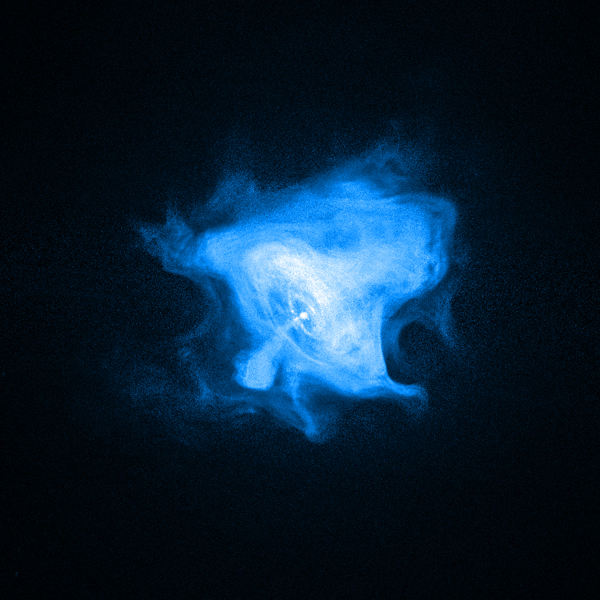Crab Nebula: A supernova remnant and pulsar located 6000 light years from Earth in the constellation of Taurus.
Caption: In the Crab Nebula, a rapidly rotating neutron star, or pulsar (white dot near the center),
powers the dramatic activity seen by Chandra. The inner X-ray ring is thought to be a
shock wave that marks the boundary between the surrounding nebula and the flow of
matter and antimatter particles from the pulsar. Energetic particles move outward to
brighten the outer ring and produce an extended X-ray glow. The jets perpendicular to
the ring are due to matter and antimatter particles spewing out from the poles of the
pulsar. The fingers, loops and bays visible on the outer boundary of the nebula are
likely caused by confinement of the high-energy particles by magnetic forces.
Scale: Image is
5 arcmin across.
Chandra X-ray Observatory ACIS Image
|


